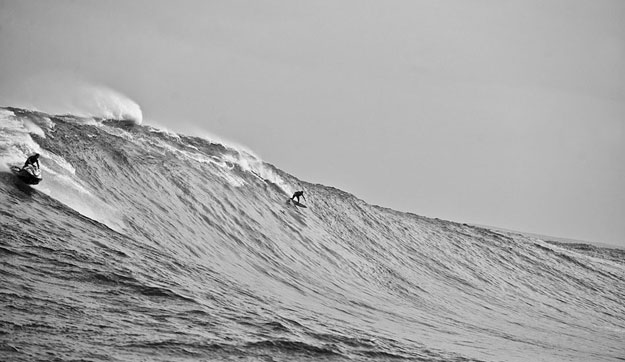
Dave Kalama dropping off Laird Hamilton at Jaws. Photo: Tim McKenna.
#5. Laird Hamilton
Despite the grumblings of a few in the surf community that Laird’s contributions to surfing have done more harm than good, the mark he’s left on it is undoubtedly a large one: his innovations have shaped the way people surf.
Born in San Francisco halfway through the ’60s, Laird Hamilton‘s father left the family to join the Merchant Marines when Laird was five months old. His mother took him to Oahu and married a man named Bill Hamilton. Laird began surfing at a very young age, largely in part to his mother’s new husband. Sometime in the early ’90s – accounts vary on the matter – former world tour pro Buzzy Kerbox and Laird Hamilton decided to try towing into waves from behind Kerbox’s boat. Tow surfing was born, and in a short period of time, Laird, along with a group of wildmen, had started a PWC-powered revolution, with its headquarters at Maui’s Jaws.
Hamilton excelled at much more that surfing, though: in 1990, he and Buzzy Kerbox crossed the English Channel in just under six hours. He held a European speed record in the mid-’80s after reaching a speed of 36 knots on a sailboard. He invented foil-boarding – which was not exactly an original idea, but the application to surfing was. Although foil-boarding never really took off, it is an reminder of Laird’s dedication to breaking boundaries.
On August 17, 2000, Hamilton broke more of those boundaries when he surfed what was then the thickest, heaviest wave ever ridden. Dubbed the Millennium Wave, his ride at Teahupoo cemented his already solid roll as surfing’s premiere big-wave surfer and rocketed him to an almost legendary status.

